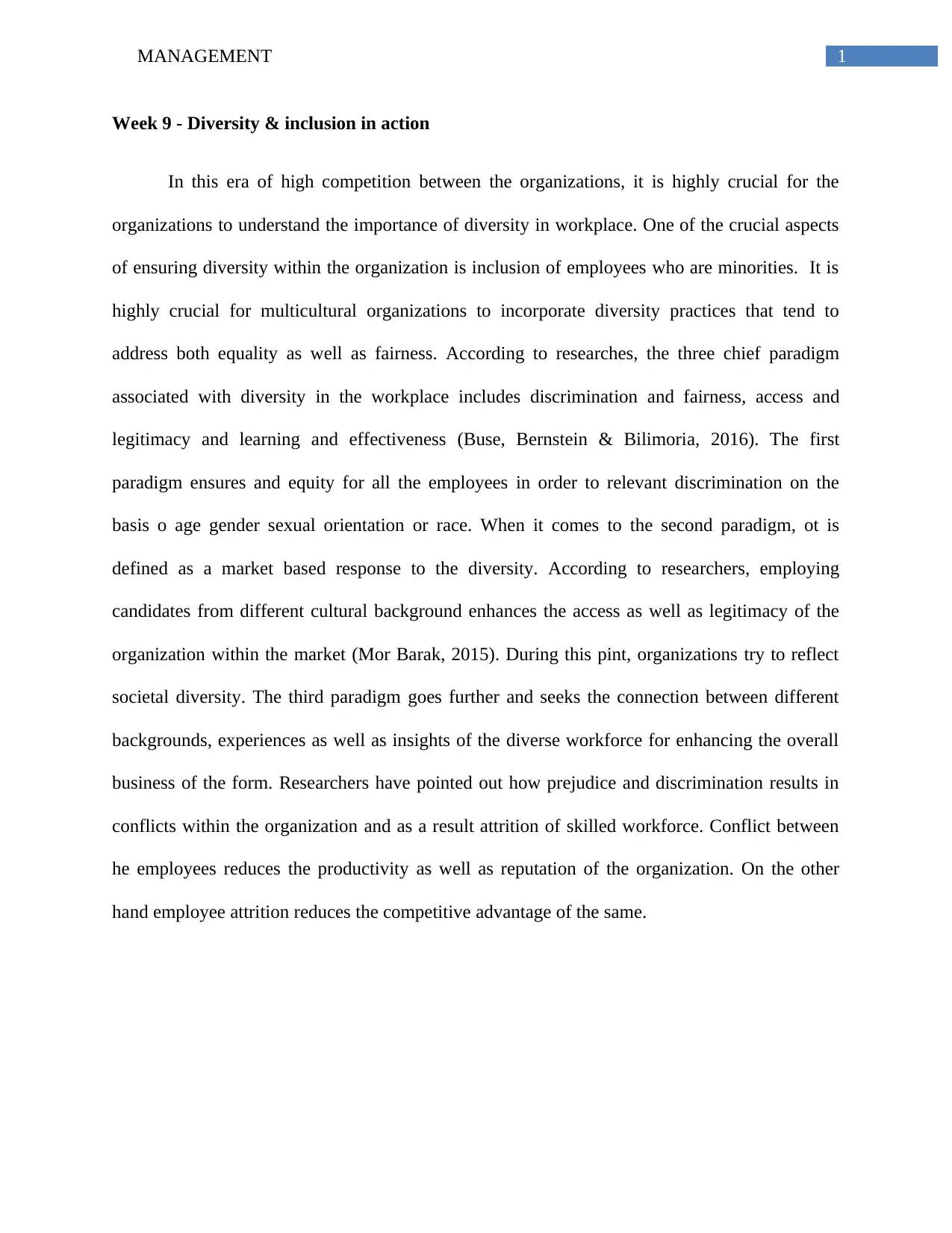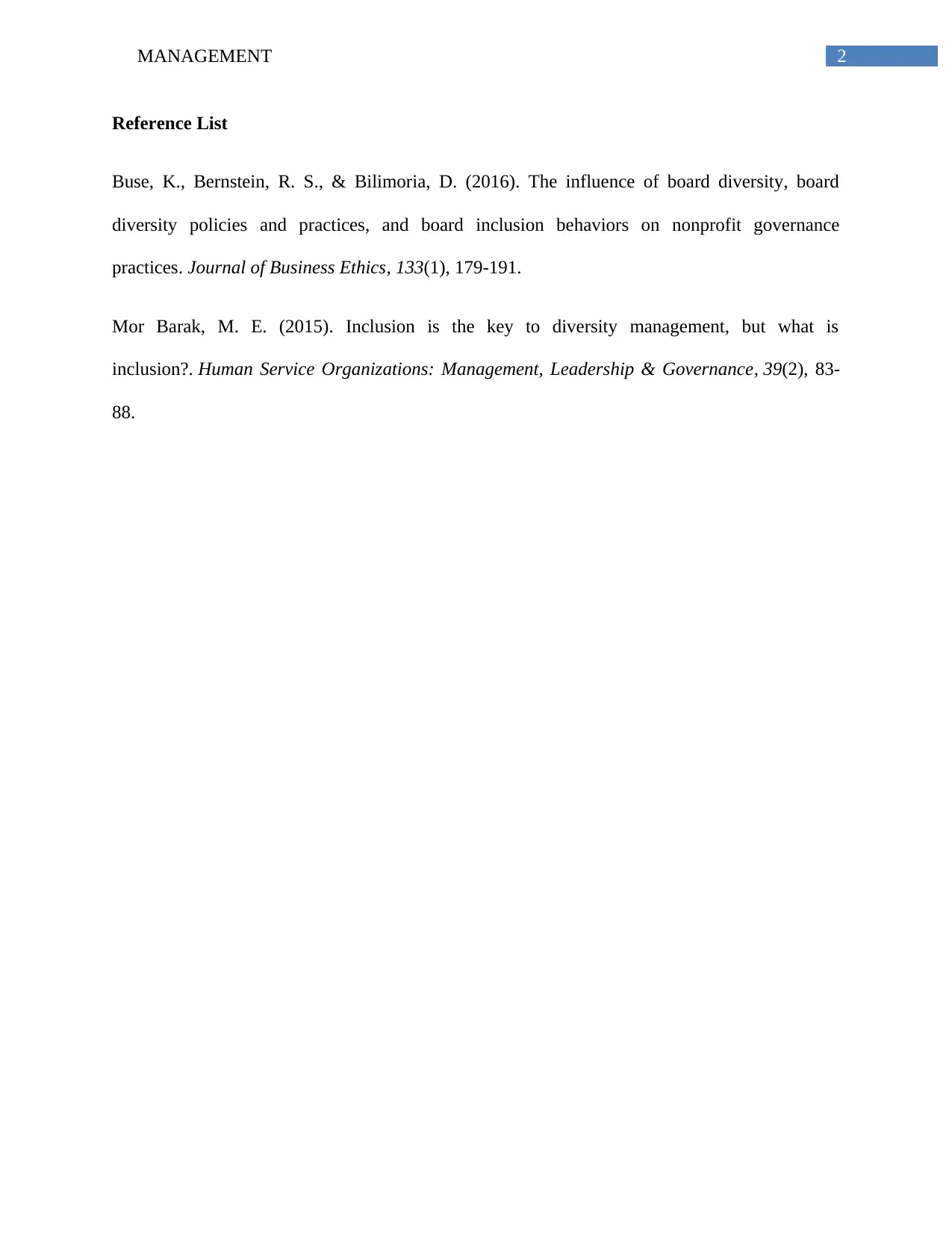The Importance of Diversity and Inclusion in Management Practices
VerifiedAdded on 2023/01/17
|3
|392
|94
Report
AI Summary
This report examines the critical role of diversity and inclusion in contemporary management practices, emphasizing the importance of creating inclusive workplaces. It highlights the significance of understanding diverse cultural backgrounds and experiences within organizations. The report delves into various paradigms such as discrimination and fairness, access and legitimacy, and learning and effectiveness, emphasizing how these influence organizational behavior and employee relations. It also discusses the impact of diversity on the global business environment and the importance of incorporating these aspects to enhance the overall business of the form. The report underscores the need for inclusive practices to reduce conflict and improve productivity, ultimately enhancing the organization's competitive advantage. The report also references how prejudice and discrimination results in conflicts within the organization and as a result attrition of skilled workforce, and how employee attrition reduces the competitive advantage.
1 out of 3










![[object Object]](/_next/static/media/star-bottom.7253800d.svg)